National Education Day 2024
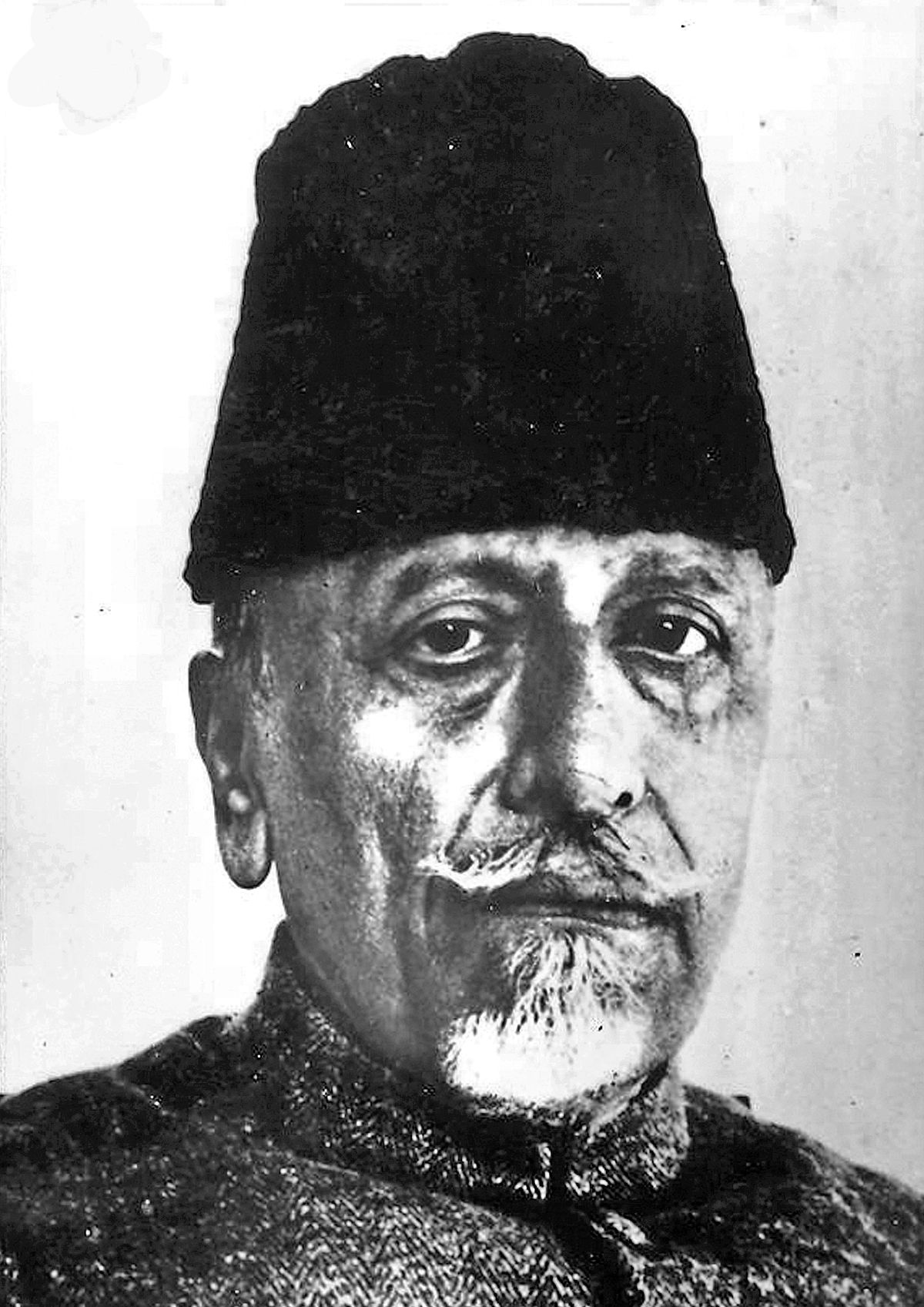
- 11 Nov 2024
In News:
National Education Day is celebrated annually on November 11 to honor the birth anniversary of Maulana Abul Kalam Azad, India's first Education Minister and a prominent freedom fighter, scholar, and educator.
Key Highlights:
- Establishment:
- The observance was instituted by the Ministry of Human Resource Development (now Ministry of Education) in 2008 to recognize Azad’s pivotal contributions to India’s education system and his vision for a progressive, educated society.
- Azad's Contributions to Education:
- Azad played a significant role in shaping India's post-independence educational landscape, establishing critical institutions such as:
- University Grants Commission (UGC)
- All India Council for Technical Education (AICTE)
- Indian Institutes of Technology (IIT), including IIT Kharagpur
- Indian Council for Cultural Relations (ICCR)
- Promoted scientific research, cultural institutions, and technical education.
- Azad played a significant role in shaping India's post-independence educational landscape, establishing critical institutions such as:
- Significance of National Education Day:
- Reflects India’s commitment to promoting quality and inclusive education.
- Emphasizes the importance of education in empowering individuals and fostering national progress.
- Highlights educational reforms, literacy, and equal access to education as tools for societal transformation and empowerment.
- Theme for 2024:
- Although not officially published yet, the theme is expected to focus on inclusive, high-quality education, underlining the need for educational systems that equip students with skills to thrive in a rapidly evolving world.
- Focus Areas:
- Promoting literacy, equal access to education, and educational reforms.
- Developing critical thinking, creativity, and emotional intelligence in students.
Global Education Monitoring Report 2024
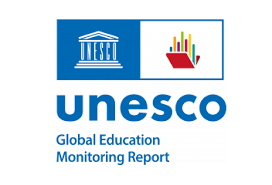
- 09 Nov 2024
In News:
- Released at the Global Education Meeting, hosted in Fortaleza by Brazil, the G20 President.
- Highlights progress and challenges in global education, with a focus on leadership, financing, and access.
Key Observations:
Leaders as Agents of Change:
- Education leadership is defined as social influence towards achieving common educational goals.
- Education leaders must:
- Define clear purposes and influence change.
- Balance learning outcomes with equity, quality, and inclusion.
Funding Deficits:
- 4 out of 10 countries spend less than 4% of their GDP on education.
Out-of-School Children:
- 251 million children and youth globally remain out of school, with only a 1% reduction since 2015.
Regional Disparities in Education Access:
- Central and Southern Asia show significant progress, but countries like Afghanistan, Bangladesh, India, and Pakistan still have large out-of-school populations.
Recommendations:
- Leadership Development: Empower school principals with the autonomy to manage schools effectively.
- Capacity Building for System Leaders: Strengthen the ability of education officials to act as system leaders.
- Climate Change Education: Introduce climate change topics in early education across subjects, not limited to science.
India’s Educational Initiatives:
- National Education Policy (NEP) 2020: Focuses on developing school leadership through training and workshops for principals.
- NISHTHA Program: Aims to improve leadership and management competencies of school heads and teachers.
Current Educational Landscape:
- Since 2015, 110 million children have entered school, and 40 million more complete secondary education.
- However, 33% of children in low-income countries remain out of school, compared to only 3% in high-income countries.
- Sub-Saharan Africa houses more than half of the global out-of-school youth.
Challenges in Education Financing:
- UNESCO–World Bank report highlights that 40% of countries allocate less than 15% of their public expenditure to education.
- Countries investing less than 4% of GDP in education face significant resource shortages.
- Low-income countries spend an average of $55 per learner, while high-income countries spend $8,543 per learner.
Need for Innovative Financing Mechanisms:
- Debt-for-Education Swaps: Proposes converting unsustainable debt into funding for education, leveraging past successful initiatives.
- Multilateral Platforms: Suggested to facilitate global negotiations for converting debt into educational investments, involving entities like UNESCO and the G20.
International Cooperation and Solidarity:
- Decline in Education Assistance: Official development assistance for education has decreased from 9.3% in 2019 to 7.6% in 2022.
- Strengthening Partnerships: The need for enhanced global cooperation to fill the educational financing gap and ensure equitable access to quality education.
Strengthening Teaching-Learning and Results for States (STARS)
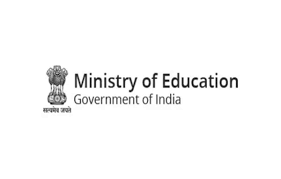
- 18 Oct 2024
In News:
The Department of School Education & Literacy (DoSE&L), Ministry of Education, hosted a two-day Strengthening Teaching-Learning and Results for States (STARS) knowledge sharing workshop in Bhopal, Madhya Pradesh.
- Event Overview:
- Two-day workshop hosted by the Department of School Education & Literacy (DoSE&L), Ministry of Education.
- Focus areas: School-to-Work Transition and Strengthening the Assessment System.
- Key Objectives:
- To enhance school-to-work transitions.
- To discuss strengthening educational assessment systems.
- Align education with future workforce needs as per the National Education Policy 2020.
Day 1: School-to-Work Transition
Panel Discussions:
- Policy Frameworks:
- Role of National Education Policy 2020, National Curriculum Framework (NCF), and National Credit Framework (NCrF) in school-to-work transitions.
- Focus on integrating skill education into school curricula, fostering multidisciplinary learning, and continuous evaluation to meet industry standards.
- Emphasis on internships, apprenticeships, and flexible learning pathways.
- Curriculum Integration:
- Need for integrated efforts across departments and aligning curriculum with industry demands.
- Focus on strengthening 21st-century skills in CBSE schools.
- Career Counselling and Psychometric Analysis:
- Focus on using psychometric assessments for career counselling and preparing students for future work environments.
- Work-Based Learning:
- Discussed partnerships with industry for work-based learning.
- Effective collaborations between schools and industry for internships, placements, and best practices.
Day 2: Strengthening Assessment System
- Psychometric Analysis & Career Counselling:
- Smt. Idzes Angmo Kundan (Principal Secretary, Maharashtra) presented the 3 P approach to career choices: Personal Interest, Parental Approach, and Possible Opportunities.
- Enhancing Student Outcomes:
- Discussed improving student outcomes by strengthening assessment systems.
- Shared innovations in educational assessments.
- Highlighted innovative assessment practices for future education.
- VSK Implementation (Chhattisgarh):
- Discussed VSK modes, data analysis, and strategies for integrating assessment outcomes with learning objectives.
- Strengthening Assessment Cells:
- Advocated for the establishment of assessment cells.
- Discussed best practices and challenges in strengthening assessment cells across states.
Why is T.N.’s education funding on hold?
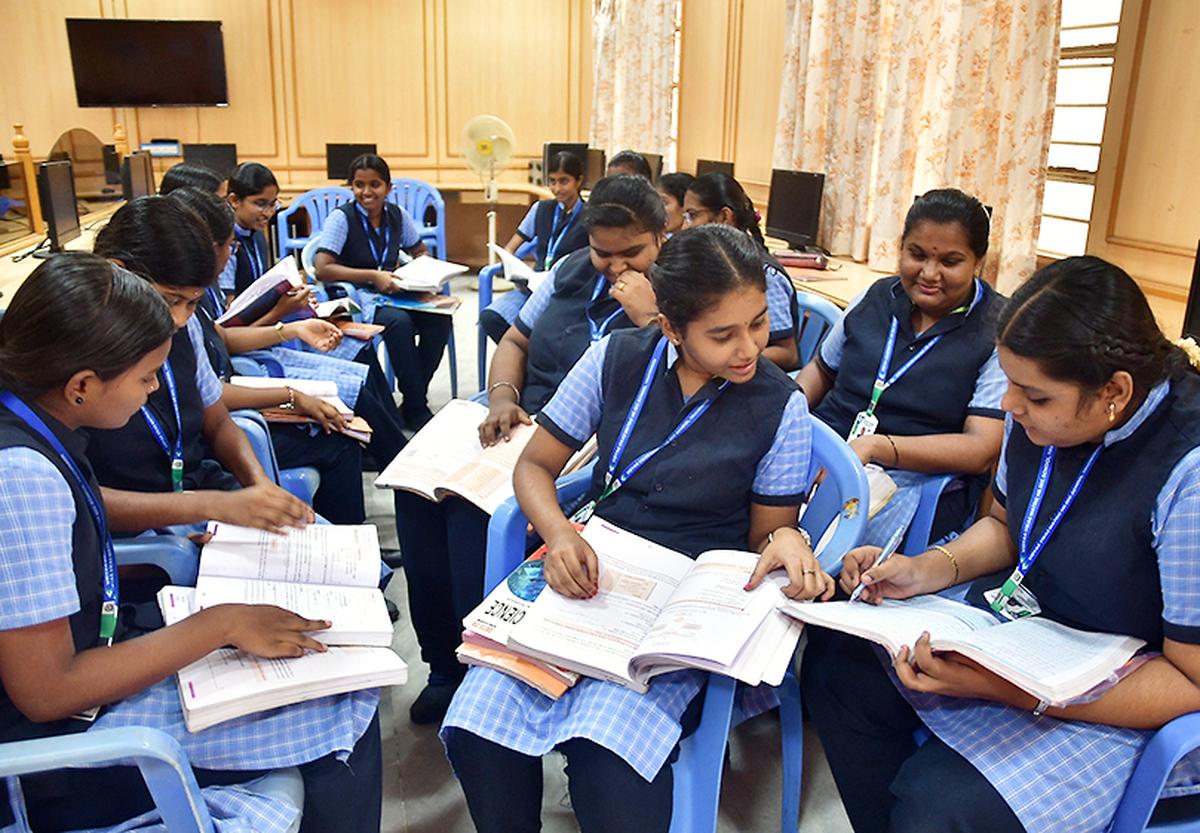
- 17 Sep 2024
In News:
Tamil Nadu is yet to receive this year’s funds from the Union government under the flagship education scheme Samagra Shiksha. According to the State government, the Centre has linked these funds to the complete implementation of the National Education Policy (NEP) 2020, which includes provisions that the State has opposed, including the contentious three-language formula.
What is Samagra Shiksha and why has Tamil Nadu not gotten funds under it?
- Samagra Shiksha is an integrated Centrally-sponsored scheme for school education from nursery till Class 12, with components for teacher training and salaries, special education, digital education, school infrastructure, administrative reform, vocational and sports education, with grants for textbooks, uniforms, and libraries, among others.
- The scheme’s estimated outlay between 2021 and 2026 is ?2.94 lakh crore, with the Centre and States contributing funds in a 60:40 ratio. For 2024-25, Tamil Nadu’s allocation under the scheme amounts to ?3,586 crore of which the Central share is ?2,152 crore, with a first quarterly instalment of ?573 crore, which has not yet arrived halfway through the financial year.
- In a letter to Prime Minister Narendra Modi last month, Tamil Nadu Chief Minister M.K. Stalin accused the Centre of imposing a prerequisite for the fund’s disbursal, namely, the signing of a Memorandum of Understanding (MoU) for another Centrally-sponsored education scheme called PM Schools for Rising India (PM Shri).
- This scheme, being run from 2022-2027, aims to create 14,500 model schools across the country to showcase the implementation of NEP 2020, and has a much smaller project cost of ?27,360 crore. The Centre has sent at least 10 letters to Tamil Nadu from September 2022, asking the State to sign the MoU, which included an agreement to fully implement the NEP.
In March 2024, Tamil Nadu committed to signing the PM Shri MoU due to its link to delayed funding for the larger Samagra Shiksha scheme. However, after signing a modified MoU in July that excluded NEP implementation, the Centre found it unacceptable. In August, Chief Minister M.K. Stalin noted that states signing the MoU received funds, accusing the Centre of “denying funds to the best-performing States” for not complying with NEP. The Union Education Ministry labeled these claims as misleading, but Tamil Nadu has not received Samagra Shiksha funds due to the incomplete MoU.
What is Tamil Nadu’s problem with the NEP 2020?
Tamil Nadu Education Minister highlighted the state's objections to specific NEP elements, such as the three-language formula and curriculum changes. He stated that Tamil Nadu is already implementing many acceptable aspects of the NEP through its own initiatives and warned that linking Samagra Shiksha funds to full NEP compliance infringes on the state's constitutional autonomy in education.
Tamil Nadu’s draft State Education Policy (SEP), submitted in July, clearly indicates that the State wants to stick to the 5+3+2+2 curricular formula, rather than the NEP, which includes the pre-school years. The SEP also proposes five years as the age of entry to Class 1, as against six years in the NEP. The State wants undergraduate college admissions to be based on Class 11 and 12 marks, rather than a common entrance test as proposed by the NEP. The biggest hurdle, however, is the NEP’s three-language formula.
Why does Tamil Nadu oppose the three-language formula?
The NEP 2020 recommends using the mother tongue or local language as the medium of instruction until Class 5, with all students learning at least three languages, including two native to India. This three-language formula has been part of every NEP since 1968 but has faced long-standing opposition in Tamil Nadu, rooted in historical movements against mandatory Hindi.
Tamil Nadu follows a two-language policy, requiring students to study Tamil and English, while allowing the choice of an optional third language, such as Hindi. Education Minister Anbil Mahesh emphasized Tamil's importance in the state's identity alongside English proficiency.
While the NEP offers flexibility and states that no language will be imposed on any state, allowing students to choose Tamil as a third language, all major political parties in Tamil Nadu have rejected the three-language formula. In response to concerns about opposing mother-tongue education, Mahesh affirmed the state prioritizes inclusive learning with Tamil at its core.
New Education Policy Taking Forward Swami Dayanand’s Vision (Indian Express)
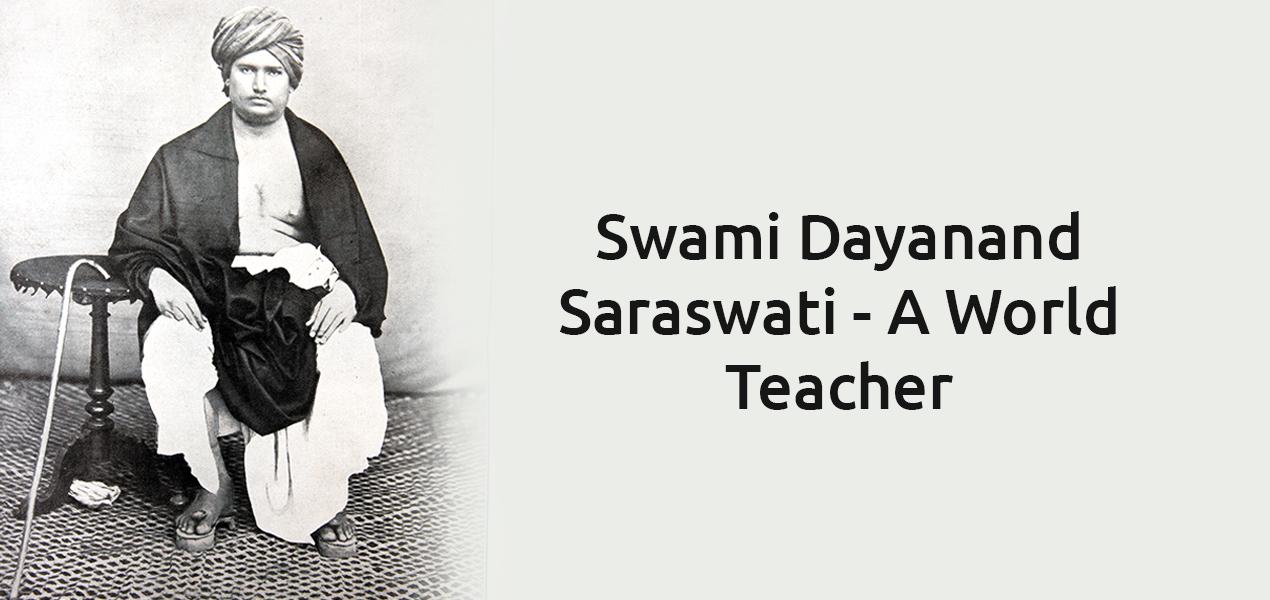
- 12 Feb 2024
Why is it in the News?
The National Education Policy 2020 is taking forward the vision of social reformer Swami Dayanand Saraswati, Prime Minister Narendra Modi said recently.
Who was Maharishi Dayanand Saraswati?
- Maharishi Dayanand Saraswati, born on February 12, 1824, in Tankara, Gujarat, was a pioneering social reformer.
- He established the Arya Samaj in 1875 with the aim of addressing prevailing social injustices.
Religious and Social Reforms:
- Rejection of Idolatry and Ritualism: Dayanand Saraswati staunchly opposed idol worship and ritualistic practices, advocating instead for the worship of a formless, attributeless God as outlined in the Vedas.
- Shuddhi Movement: He initiated the Shuddhi Movement to reclaim individuals who had converted to religions like Islam or Christianity, aiming to reintegrate them into Hinduism.
- Back to Vedas: Recognizing the importance of Vedic wisdom, he spearheaded a movement to revive the teachings of the Vedas, emphasizing their relevance in modern society.
- Women’s Rights: Dayanand Saraswati championed women’s rights, advocating for their education and equal participation in social and religious spheres alongside men.
- Opposition to Child Marriage and Sati: He vehemently opposed practices like child marriage and sati, viewing them as detrimental to society and antithetical to Vedic principles.
Educational Reforms:
- Dayanand Saraswati established several Gurukuls to impart Vedic knowledge to his followers and empower them to disseminate this wisdom further.
- Influenced by his philosophy and vision, his disciples founded the Dayanand Anglo Vedic (DAV) College Trust and Management Society following his demise in 1883.
- The first DAV High School was founded in Lahore on June 1, 1886, under the leadership of Mahatma Hans Raj.
Literary Contributions:
- Dayanand Saraswati's philosophical ideas are encapsulated in his notable works like "Satyartha Prakash" and "Veda Bhashya," shedding light on his vision for Hindu reform.
- His thoughts were further disseminated through the journal "Arya Patrika," which he edited, reflecting his philosophical convictions.
Arya Samaj:
- Founded by Dayanand Saraswati in Bombay in 1875, the Arya Samaj, meaning "society of the nobles," aimed to reform Hinduism by steering it away from superstition.
- With the motto "Krinvanto Vishwam Aryam" meaning "Make this world noble," the Samaj advocated for a return to the true essence of Hinduism, rejecting ritualistic practices like idol worship, pilgrimage, and animal sacrifice.
- In the 1880s, the Samaj actively supported widow remarriage, promoting social reforms aligned with its principles.
- The Arya Samaj's influence extends beyond India, with active branches worldwide.
Support to Students for Participating in Competitions Abroad (SSPCA) Initiative (India Today)

- 08 Feb 2024
Why is it in the News?
The All India Council for Technical Education (AICTE) recently introduced a scheme named 'Support to Students for Participating in Competitions Abroad' (SSPCA).
About the Support to Students for Participating in Competitions Abroad (SSPCA) Initiative:
- The SSPCA Initiative, spearheaded by the All India Council for Technical Education (AICTE), aims to enhance the global competitiveness of Indian students in technical education.
- Crafted to provide financial backing to students aspiring to excel in international scientific events, the initiative offers a comprehensive support system.
Financial Assistance and Mentorship:
- Under the SSPCA scheme, individual students or student teams can avail themselves of travel grants to engage in international competitions.
- This assistance encompasses financial aid, mentorship, logistical support, and networking opportunities, empowering students to effectively represent India on the global stage.
- Financial aid extended by the AICTE scheme amounts to up to Rs 2 lakh per student, covering various expenses such as international and domestic travel, registration fees, visa applications, accommodation, airport taxes, travel insurance, and equipment costs associated with the competition.
Eligibility:
- Eligibility for the SSPCA initiative extends to students enrolled in diploma, B.E./B. Tech, integrated M. Tech, and M./M. Tech programs in AICTE-approved institutions.
- Each team of students is entitled to financial support under the scheme once during the course of their study.
About the All India Council for Technical Education (AICTE):
- Established as the statutory body and national-level council for technical education in India, the AICTE has played a pivotal role in shaping the landscape of technical education in the country.
- Founded in 1945 as an advisory body, it gained statutory status through an Act of Parliament in 1987.
Functions:
- The AICTE is responsible for granting approval for the establishment of new technical institutions, the introduction of new courses, and variations in intake capacity.
- It sets and upholds norms and standards for technical institutions to ensure quality development.
- Additionally, the AICTE promotes technical education through various schemes aimed at fostering innovation, faculty development, research and development, and inclusivity for women, the handicapped, and marginalized sections of society.
- Technical institutions under the AICTE's purview encompass a wide array of programs, including post-graduate, undergraduate, and diploma courses across multiple disciplines.
- Headquartered in New Delhi, the AICTE continues to be at the forefront of advancing technical education and innovation in India.
PM’s school becomes base for week-long residential programme for students (The Hindu)
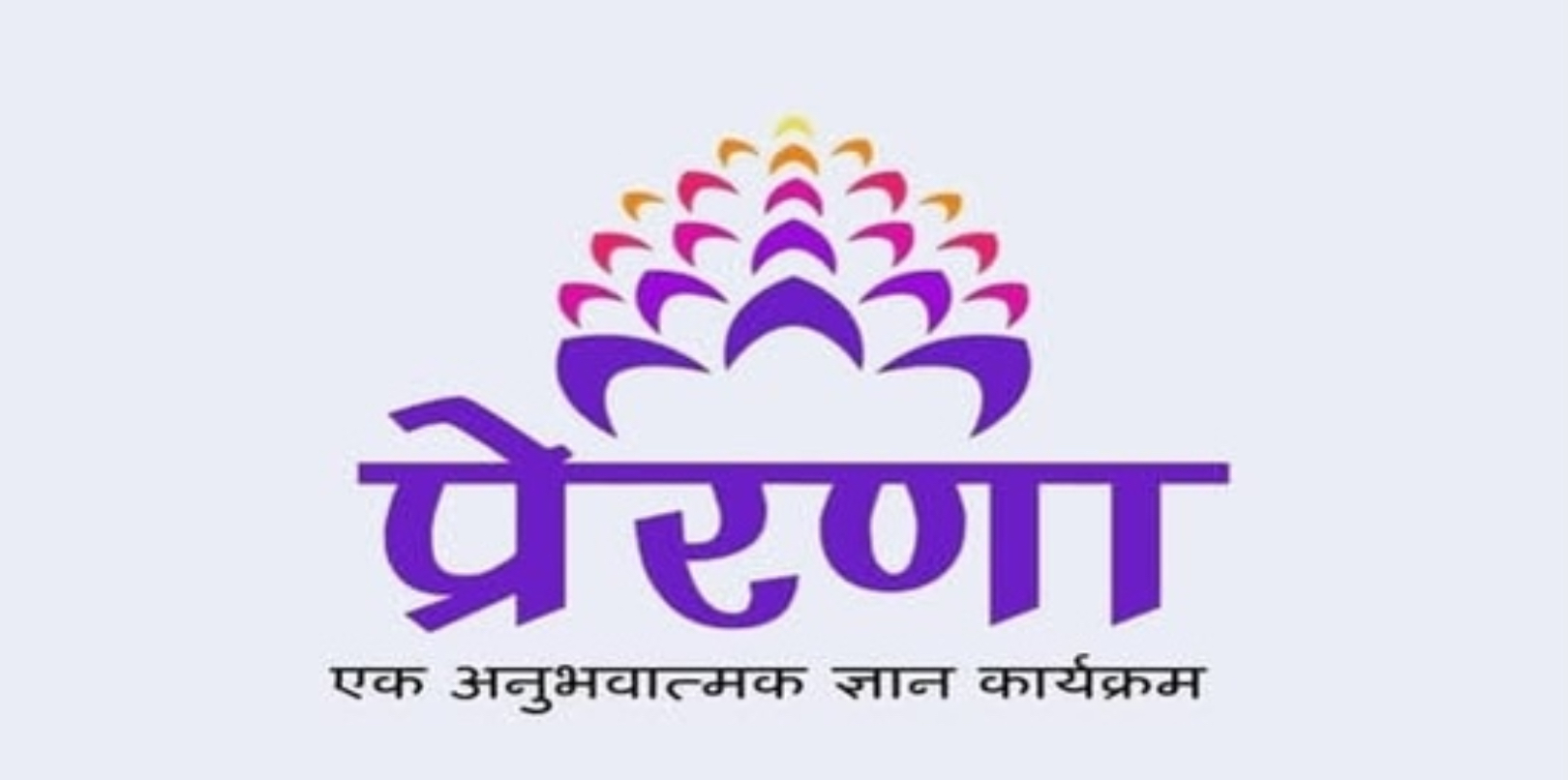
- 05 Jan 2024
Why is it in the News
The Ministry of Education on Thursday launched ‘Prerana’, an experiential learning programme, which will operate from the vernacular school in Prime Minister Narendra Modi’s birthplace Vadnagar, Gujarat where Mr. Modi studied when he was a student.
Context:
- The Department of School Education & Literacy, operating under the Ministry of Education, Government of India, has unveiled 'Prerana: An experiential learning program.'
- This innovative initiative is specifically crafted to deliver a profound, distinctive, and motivational learning experience to its participants.
- The overarching goal of this program is to cultivate and nurture leadership qualities among the individuals involved, thereby contributing to their holistic development and empowering them with the skills necessary for effective leadership in various contexts.
What is ‘Prerna’ Program?
- Prerana is driven by a strong commitment to integrate principles of Indian education system and the philosophy of value-based education which is a corner stone of the National Education Policy (NEP) 2020.
- It is a week-long residential program for selected students of class IX to XII.
- It is an experiential and inspirational learning program for students with the best-in-class technology where heritage meets innovation.
- A batch of 20 selected students (10 boys and 10 girls) will attend the program, every week from various parts of the country.
- Prerana program will run from a Vernacular School, established in 1888, in one of the oldest living cities of India, Vadnagar, district Mehsana, Gujarat.
- The curriculum of Prerana School prepared by IIT Gandhi Nagar is rooted in nine value based themes:
- Swabhiman and Vinay
- Shaurya and Sahas
- Parishram and Samarpan
- Karuna and Sewa
- Vividhta and Ekta
- Satyanishtha and Shuchita
- Navachar and Jigyasa
- Shraddha aur Vishwas, and
- Swatantrata and Kartavya.
- The program based on above themes will inspire the youth and foster respect for Bharat's unity in diversity, embodying the spirit of "Vasudhaiva Kutumbakam" and will contribute by making the youth of today, a flame holder for Viksit Bharat.
- Towards this endeavour, the participants will be guided by mentors from prestigious institutions.
- Selection Procedure: Students can register through the portal, wherein applicants can fill the requisite details to be a part of the ambitious and aspirational Prerana program.
- The registered applicants will go through a selection process, as prescribed on the portal.
- Applicants can also join the selection procedure conducted at the School/block level, on designated ‘Prerana Utsav’ day, through various activities based on the ethos of Prerana to evaluate for well rounded personalities keen to shape the future of our nation.
- Upon selection, the 20 participants (10 boys and 10 girls) will be attending the Prerana program and embark on a journey of inspiration, innovation, and self-discovery.
- After the program, the participants will carry the ethos of Prerana into their respective communities, become change makers and spark positive change to inspire others.
Study in India (SII) portal (Indian Express)
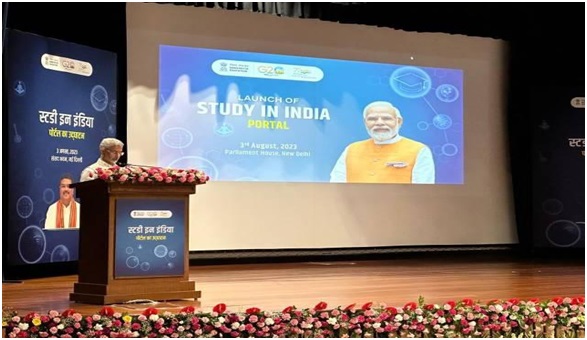
- 05 Aug 2023
Why in the News?
The Study In India (SII) portal was recently introduced by the Education Ministry, aiming to promote Indian education among international students.
About the Study in India (SII) portal:
- The Study in India (SII) portal serves as a dedicated website offering comprehensive information about higher education institutions (HEIs) in India.
- The main objective of the portal is to establish India as a global education hub and attract students from diverse backgrounds.
- The portal showcases a wide range of academic programs available in the HEIs, including undergraduate, postgraduate, and doctoral courses, along with courses related to the Indian Knowledge System (IKS), such as Yoga, Ayurveda, and classical arts.
- Detailed information about the academic facilities, research support, and other related offerings in the institutes is provided on the portal.
- It acts as a convenient one-stop platform for students, enabling them to register, apply for a visa, select desired courses, and receive offer letters from their chosen institutes.
- The portal allows students to apply to multiple institutes or courses of their preference, simplifying the application process.
- Study in India (SII) offers a streamlined and well-organized application process, providing international students with easy access to higher education opportunities in India.
What is Study in India (SII) Programme?
- The Study in India (SII) program is a prominent initiative initiated by the education ministry in 2018 with the aim of positioning India as a premier education destination for international students.
- The program seeks to attract foreign students to pursue higher education in India, providing them with valuable educational opportunities offered by renowned Indian universities.
ULLAS Initiative (PIB)
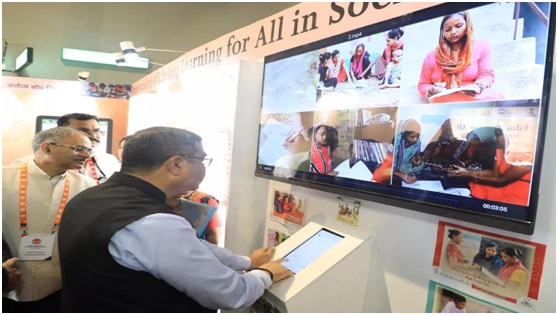
- 31 Jul 2023
Why in the News?
In New Delhi, the logo, slogan "Jan Jan Sakshar," and mobile application of ULLAS were recently unveiled by Shri Dharmendra Pradhan, the Union Minister of Education and Minister of Skill Development and Entrepreneurship.
About the ULLAS Initiative:
- The ULLAS (Understanding Lifelong Learning for All in Society) initiative, holds the potential to revolutionize education and literacy nationwide.
- Its primary objective is to create a learning ecosystem that reaches every individual, bridging the gaps in basic literacy and essential life skills.
- Targeting citizens aged 15 and above who missed the opportunity to attend formal schooling, the initiative imparts basic education, digital and financial literacy, and critical life skills.
- Implementation is driven by volunteerism, emphasizing community participation.
- The slogan of the initiative is "ULLAS: Nav Bharat Saksharta Karyakram."
- To support its goals, the ULLAS app was launched, designed with user-friendliness and interactivity in mind.
- Available on both Android and iOS platforms, the app serves as a digital gateway for learners to access a diverse range of learning resources through the DIKSHA portal of NCERT.
- The ULLAS app facilitates the registration of learners and volunteers, either through self-registration or with the assistance of surveyors.
- Significance:
- This app plays a crucial role in promoting functional literacy, vocational skills, and vital life skills such as financial literacy, legal literacy, digital literacy, and empowering citizens to actively participate in nation-building efforts.
- Furthermore, the ULLAS Initiative nurtures a culture of continuous learning and knowledge-sharing within communities across India, fostering a brighter future for the nation.
World Federation for Medical Education (WFME) (Indian Express)
- 23 Sep 2023
What is the News ?
The National Medical Commission (NMC) of India has recently earned a 10-year recognition status from the World Federation for Medical Education (WFME).
Facts About:
WFME is a worldwide organization dedicated to the training and education of medical doctors.
Their mission is to work towards better healthcare for all people.
WFME's primary goal is to elevate the quality of medical education on a global scale by promoting the highest scientific and ethical standards.
They achieve this goal through several means, including:
- Establishing standards in medical education
- Advocating for the accreditation of medical schools
- Developing databases related to medical education
- Initiating projects focused on the future of medicine and medical education
- Publishing informative materials and forming partnerships
WFME was established in 1972 and has its headquarters in Ferney-Voltaire, France.
Notably, WFME is the organization that officially represents medical teachers and medical teaching institutions on a global scale, serving as their voice before the World Health Organization (WHO).
WFME's accreditation program plays a crucial role in ensuring that medical institutions meet and uphold the highest international standards in education and training.
National Curriculum Framework for school Education 2023 (PIB)
- 24 Aug 2023
What is the News ?
Recently, the final National Curriculum Framework (NCF) has been released by the National Council of Educational Research and Training (NCERT).
Facts About:
- Framed by: The NCF was drafted by the National steering committee headed by former Chairman of the Indian Space Research Organisation (ISRO), K. Kasturirangan.
- Key points:
- For languages:
- From now, Students in Classes 9 and 10 will need to learn three languages, of which at least two will be native to India.
- Classes 11 and 12, students will learn two languages, including one of Indian origin.
- Board Exams: The NCF states that all students will be allowed to take Board exams on at least two occasions during any given school year, with only the best score being retained.
- New Text books: It follows the lead of the National Education Policy (NEP) 2020, and gives assent for formulating new textbooks from Grades 3 to 12 under the Central Board of Secondary Education (CBSE).
- Number of Subjects: For students from Classes 9 to 12 has to study five mandatory subjects, with an option of adding one more subject.
- Now, the number of mandatory subjects for Classes 9 and 10 is seven and six for Classes 11 and 12.
- Optional subjects have been grouped in three parts in the NCF.
- The first optional group includes art education, physical education and vocational education.
- The second group includes Social Science, the Humanities, and interdisciplinary areas.
- The third group includes Science, Mathematics, and computational thinking.
- Shift to semester-based term: The NCF has recommended that in the long term, all Boards should change to semester or term-based systems.
- Now, there is no hard separation between academic and vocational subjects, or between Science, Social Science, Art, and Physical Education.
- For languages:
NCF from NEP 2020:
The NCF brings the aims and commitments of the NEP:
- This includes the full range of human capacities, values and dispositions that are aimed to be developed in school education.
- Pedagogy, practices, and culture must work in tandem to develop these, and move away from an overemphasis on memorization and content accumulation; in fact, content reduction is required to create space for such development.
- The 5+3+3+4 Curricular and Pedagogical structure of school education is reflected in the learning standards, the content, the pedagogy, and the assessment approaches.
- It is integrative and holistic with equal status to all subjects and learning domains from Math to Sports.
- It integrates vocational education in all schools, and there is integration across subjects while developing rigorous subject understanding and capacities.
National Council of Educational Research and Training (NCERT):
- The National Council of Educational Research and Training (NCERT) is an autonomous organisation set up in 1961 by the Government of India to assist and advise the Central and State Governments on policies and programmes for qualitative improvement in school education.
- The major objectives of NCERT and its constituent units are to:
- Undertake, promote and coordinate research in areas related to school education
- Prepare and publish model textbooks, supplementary material, newsletters, and journals and develops educational kits, multimedia digital materials, etc.
- organize pre-service and in-service training of teachers
- develop and disseminate innovative educational techniques and practices
- Collaborate and network with state educational departments, universities, NGOs and other educational institutions
Source: https://pib.gov.in/PressReleaseIframePage.aspx?PRID=1951485
State of Elementary Education in Rural India Report (Indian Express)
- 09 Aug 2023
What is the News ?
Recently, Union Education Minister Dharmendra Pradhan launched the first State of Elementary Education in Rural India report.
Facts About:
Key Highlight of the Report:
Pan-India survey was conducted by the Development Intelligence Unit (DIU), across 6,229 rural households in 20 states, focussing on 6 to 16-year-old children in rural communities.
Equality Among Gender: Parents from rural communities believe that a child’s gender, whether a boy or a girl, should not hinder their educational aspirations.
- Total of 78 percent of parents of girls and 82 per cent of parents of boys wanted to educate their children to graduation and above.
Parental participation: About 84 percent of parentsregularly attend parent-teacher meetings, demonstrating their active involvement in their children’s education.
Role of Parents: Majority of children (62.5 per cent) are under the supervision of their mothers when it comes to their studies, while 49 per cent are supervised by their fathers.
- Over 38 per cent of parents opt for private tutors to further enhance their children’s education.
- About 26 per cent of the children study under the supervision of a private tutor.
Drop Outs: Out of the total dropped-out children, around one-fourth of male children discontinued their education during primary schooling, due tolack of interest in studies.
- Dropout rate for female children is high at 35 per cent, due to the need to contribute to the family’s earnings.
- A higher proportion of both boys and girls dropped out of school after completing the primary school education (75 per cent for boys and 65 per cent for girls).
Increased access to smartphones: Nearly half, 49.3 percent of students in rural India have access to smartphones.
- 76.7 percent of these students primarily use their phones for entertainment purposes, such as playing video games and watching movies.
- Only 34 percent of smartphone-accessible students use their devices for study-related downloads, while 18 percent access online learning through tutorials.
Learning Environment at Home: 40 percent of parents have age-appropriate reading materials available at home, beyond school books.
- Only 40 percent of parents engage in daily conversations with their children about their school learning, while 32 percent have such discussions a few days a week.
Source: https://indianexpress.com/article/education/78-parents-in-rural-india-want-their-daughters-to-study-till-graduation-and-beyond-report-8885528/#:~:text=in%20family's%20earnings.- ,According%20to%20the%20survey%2C%20one%2Dfourth%20of%20male%20children%20dropped,after%20completing%20primary%20school%20education.
